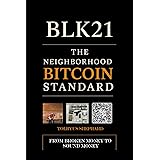Mastering Your Bitcoin Investment: How to Buy and Securely Store Bitcoin
Understanding how to confidently buy Bitcoin and then secure your digital assets is a critical skill for any modern investor. The accompanying video offers a fantastic visual walkthrough, demonstrating the step-by-step process of acquiring Bitcoin through a trusted exchange and then transferring it to a hardware wallet for enhanced security. This comprehensive guide expands on those core principles, providing deeper insights and practical advice to help you navigate the world of cryptocurrency with greater knowledge and peace of mind.
Why Consider a Bitcoin Investment Today?
For many individuals, the decision to invest in Bitcoin stems from a confluence of compelling economic and technological factors. Bitcoin, often dubbed “digital gold,” is seen as a hedge against traditional financial instabilities, offering a decentralized alternative to fiat currencies.
Firstly, its fixed supply is a primary attraction. Unlike government-issued currencies that can be printed infinitely, Bitcoin has a hard cap of 21 million coins. This inherent scarcity positions it as a deflationary asset, particularly appealing during periods of quantitative easing and inflation concerns. The video mentions the Bitcoin halving event, which reduces the rate at which new Bitcoin is created, further reinforcing its scarcity and potentially impacting its long-term value.
Secondly, the fear of inflation, driven by large-scale government stimulus and central bank policies, frequently leads investors to seek out “hard assets.” Bitcoin fits this description, offering a store of value that cannot be devalued by arbitrary printing. Its decentralized nature means no single entity can control or manipulate its supply, providing a layer of financial autonomy that traditional assets often lack.
Lastly, for those intrigued by the philosophical underpinnings of cryptocurrency, books like “The Bitcoin Standard” offer profound insights into its potential as a revolutionary form of money. This influential work delves into Bitcoin’s historical context and its role in a sound monetary system, often shifting perspectives on its long-term investment viability.
The Critical Importance of Secure Bitcoin Storage
While purchasing Bitcoin is straightforward, securing your investment is paramount. A common misconception among new investors is that leaving cryptocurrency on an exchange is safe. However, as the video underscores, holding Bitcoin directly on an exchange carries significant risks that every investor must understand.
One major concern is the lack of federal insurance. Unlike traditional bank accounts, which are often protected by institutions like the FDIC up to certain limits, cryptocurrency held on exchanges typically does not have such safeguards. This means if an exchange is compromised, hacked, or collapses, your funds could be irretrievably lost.
History is replete with examples of devastating exchange breaches. The video highlights a notable incident where a prominent cryptocurrency exchange, Binance, experienced a security breach resulting in the loss of approximately $40 million worth of Bitcoin. Such events serve as stark reminders of the vulnerabilities inherent in centralized platforms.
Furthermore, the fundamental principle of “not your keys, not your coins” is crucial. When your Bitcoin is held on an exchange, you technically don’t own the private keys that control your cryptocurrency. The exchange does. This arrangement means you are trusting a third party with your assets, which contradicts the decentralized ethos of Bitcoin itself.
Choosing the Right Exchange to Buy Bitcoin
When selecting an exchange for your initial Bitcoin purchase, it is vital to prioritize platforms that offer a balance of user-friendliness, reasonable fees, and, critically, the ability to transfer your cryptocurrency off the platform. This last point is non-negotiable for securing your investment properly.
The video specifically advises against using platforms like Robinhood for cryptocurrency purchases, despite its commission-free stock trading. The core issue is its inability to facilitate sending or receiving cryptocurrency to and from external wallets. This limitation means your Bitcoin is effectively locked within the platform, forcing you to sell it to withdraw funds, which undermines the entire purpose of owning a transferable digital asset.
For a robust and reliable entry point into the crypto market, reputable exchanges like Coinbase are widely recommended. Coinbase has established itself as a leader in the space, serving tens of millions of customers and facilitating hundreds of billions of dollars in cryptocurrency transactions globally. Its widespread support across numerous countries also makes it accessible to a diverse international audience.
Setting up an account on Coinbase generally involves identity verification, linking a payment method, and then proceeding with your purchase. While fees for larger transactions, such as the 1.5% mentioned in the video for a $1,000 purchase, do apply, they are considered reasonable given the platform’s security and regulatory compliance. Moreover, introductory offers, such as receiving $10 of free Bitcoin for an initial purchase of $100 or more, provide an excellent incentive for new users.
Securing Your Bitcoin with a Hardware Wallet
Once you’ve acquired Bitcoin through an exchange, the next and most vital step is to transfer it to a hardware wallet. This method, known as self-custody, is the gold standard for securing your digital assets, effectively removing them from the vulnerabilities of online exchanges.
A hardware wallet is a physical electronic device designed to store your private keys offline. By keeping your keys disconnected from the internet, it significantly reduces the risk of hacking and theft. The video demonstrates the use of a Ledger Nano S, a popular choice that connects to your computer to facilitate transactions while keeping your private keys isolated.
Using a hardware wallet involves a few key steps:
- Purchasing the Device: It is essential to buy hardware wallets directly from the manufacturer or an authorized reseller to avoid counterfeits or compromised devices. The video suggests considering a hardware wallet if you hold $500 or more in cryptocurrency, a prudent recommendation for safeguarding substantial investments.
- Setup and Passcode: Upon receiving your device, you will set up a secure PIN or passcode. This is your primary access key to the device itself.
- Recovery Phrase (Seed Phrase): During setup, the device will generate a unique sequence of 12 or 24 words, known as a recovery phrase or seed phrase. This phrase is critically important; it is the master key to your Bitcoin and other cryptocurrencies. If you lose your hardware wallet, forget your PIN, or if the device is damaged, this recovery phrase is the only way to restore access to your funds on a new wallet. Store this phrase offline, in multiple secure physical locations, and never share it with anyone.
- Transferring Bitcoin: Using the hardware wallet’s companion software (like Ledger Live for Ledger devices), you will generate a receiving address. This address is what you’ll use in your exchange’s app (e.g., Coinbase) to send your Bitcoin. Always double-check the address before initiating a transfer, and consider sending a small “test” amount first for larger sums.
The process, as shown in the video, is intuitive: you initiate a send from your Coinbase account, scan the QR code provided by your hardware wallet’s software, confirm the details, and execute the transfer. The funds typically arrive within minutes, depending on network congestion.
Navigating Cost Basis and Cryptocurrency Taxes
An often-overlooked aspect of Bitcoin investment is the tax implication. Tracking your cost basis—the original value of an asset for tax purposes—is crucial, especially given Bitcoin’s volatile nature and the ease with which it can be moved between wallets and exchanges.
The challenge with Bitcoin, as highlighted in the video, is that traditional exchanges may not accurately track your cost basis if you frequently move assets in and out. This is because every time you buy, sell, trade, or sometimes even spend cryptocurrency, it can trigger a taxable event. The profit or loss is calculated based on the difference between your cost basis and the value at the time of the transaction.
To comply with tax regulations (like those of the IRS in the US), it is highly recommended to maintain a personal record of all your Bitcoin transactions. A simple spreadsheet, as suggested by the speaker, can effectively log key details such as:
- The date of purchase
- The amount of Bitcoin purchased
- The total cost in fiat currency
- The price paid per Bitcoin
This meticulous record-keeping enables you to accurately calculate your capital gains or losses when you eventually sell or trade your Bitcoin. For instance, if you purchase 1.5 Bitcoin for a total of $10,838.52 (a cost basis of $7,196 per coin) and later sell it for $14,000, your taxable profit would be the difference, approximately $3,161.48. Having clear documentation is vital for demonstrating your financial activities to tax authorities.
Fortunately, various crypto tax software solutions are now available that can integrate with exchanges and wallets to help automate this tracking process, simplifying compliance for active traders and long-term holders alike.
Embracing Secure Bitcoin Ownership
By following these best practices for acquiring and storing Bitcoin, you empower yourself to participate in the burgeoning digital economy with confidence and enhanced security. Remember, the journey begins with choosing a reputable exchange like Coinbase for your purchase and culminates in the secure, self-custodied storage of your Bitcoin on a hardware wallet. Prioritizing these steps ensures your digital assets are protected, offering you peace of mind as you continue your Bitcoin investment journey.







